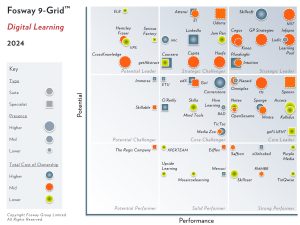Modern slavery is still a huge ongoing global issue, with 20 to 30 million people still estimated to be enslaved in 161 countries worldwide, and 20 new suspected victims found in the UK just this morning.
The Modern Slavery Act 2015 requires all businesses with a turnover of over £36 million to publish a statement setting out the steps they have taken, during each financial year, to ensure that slavery and human trafficking are not taking place anywhere in their supply chains and in any part of their own business.
It’s a small step towards greater regulatory control and awareness of modern slavery. However, the current issue with modern slavery reporting is twofold. Firstly, added documentation is often used as a salve for insufficient understanding resulting in additional paperwork being created, but little impact on-the-ground. Secondly, accountability tends to be pushed down the supply chain, with confirmation of good practice being asked of the next in the chain until we reach those with no interest in acting honestly, or who simply don’t care.
Learning could address both these issues of understanding and passing the blame, but it isn’t being used to do so. Here’s how it can, and why it should.
Why does modern slavery matter to business?
Slavery in any form is of course morally repugnant. But how do we make the business case for organisations to go above and beyond to stop it?
The answer lies in the nature of the modern market, and how ethics is a key marketing differentiator. Think of the billions invested in marketing centred on carbon reduction and sustainability. Ethical concerns are top on the wish list of the “Millennial liberal,” and as awareness of modern slavery as an issue grows, you’re increasingly going to need advertising campaigns that align with it.
Ethical perceptions are key risks to an organisation. Nike, for example, almost lost an entire generation of potential sales when their unethical sweatshop practices started being used as case studies in textbooks on economics, geography and citizenship. (As a side note, Innocent Smoothies made a coup here by getting their marketing stories included as ‘best practices’ in the same textbooks a decade later).
Better to have the groundwork laid and be able to show that your organisation was at the vanguard of the battle against slavery.
What can be done?
The good news is that some companies are beginning to tackle the underlying factors. Increasingly, large organisations are taking a more holistic view. They’re attempting to combat slavery by getting more involved in their supply chain on both an administrative and an economic level.
This can be done by investing in communities by building schools and offering business development loans to local workers. The benefit of this is two-fold, greater opportunity prevents people from being in positions where they’re at risk of slavery and it creates members of the community with a strong vested interest in the multinational’s continued favour. This makes them more likely to report issues they see and choose the interest of the multinational over local politics that could be threatening or corrupt.
This is all highly commendable, but what can we do here in the learning sphere to support it? How can we use elearning to up our game in the fight against modern slavery?
There is of course no simple answer. Learning within the organisation can only have a limited effect. Using it to raise awareness of modern slavery amongst employees is important, as is demonstrating that the organisation acknowledges the issue.
However, if you want to use learning to really engage change and show that your organisation is doing something to combat modern slavery, you need to think bigger. Consider the different external audiences learning could reach to deliver a real difference as part of a broader holistic initiative.

Burmese migrant workers used by the construction industry in Thailand
-
Local citizens
It could be possible to produce simple, widely distributable digital learning that can raise awareness of the issue amongst local populations. Making the elearning available in the locations modern slavery actually takes place would strengthen the fight against it at a grassroots level.
There are already non-profit organisations such as Learn Appeal doing great work bringing elearning to developing countries. On top of this, the gradual spread of information technology equipment and internet access will only speed up. With 44% of the world predicted to own a smartphone in 2017 mobile learning is an increasingly attractive delivery option.
Removing slavery is a cultural change alongside a governance one, and every local population has its own challenges. For a start, literacy may not be high, so courses need to be filled with audio and visual support and translated into local languages.
They also need to tie it into the learners’ intrinsic motivators, of which the simplest buy-ins are community and cash. The moral arguments used in ‘Western’ fundraising are far less powerful in communities where slavery is accepted as a cultural norm. A sizeable minority are even unaware they’re enslaved, with many inheriting their bonded status. The western ideal that slave-owners are ‘evil’ is not universally agreed upon. So don’t focus on the moral, focus on the economy.
Learning needs to explain how slavery damages opportunities for people’s children, including those with no direct connection to slavery, by discouraging investment and preventing the creation of legitimate jobs. With ethical consumption only increasing, it also must highlight the potential future economic benefits.
-
Supply chain managers
Managers along the supply chain need to be targeted to prevent them from passing the buck or feigning ignorance. The same principle applies – delineate the ongoing economic value to them of providing a demonstrably ethical product.
I’m going to be very on-the-nose here and suggest a digital simulation. I think that it’s only by understanding the thought processes of those involved in slavery that supply chain managers are going to understand how it propagates. I’d want to see two simulations, one from a slave’s perspective and one from the slave-owner’s. Each could include branching scenarios where choices would impact a virtual spreadsheet showing your family budget.
We want learners to understand how people agree to getting into the back of a stranger’s truck on the promise of a job. It’s not necessarily because they’re ill-educated, or don’t understand the risks. Often they have vital concerns like providing medicine for their children, and for the first few months their enslavement seems like an honest job. It’s only when they try to leave that the true situation reveals itself. Again, I believe a simulation is valuable here. “Why don’t they run away?” is an oft-asked question and one best explored by making those decisions yourself.
From the slave-owners point of view, getting children to cart granite from your mine is largely considered undesirable even by those who do it. But in their minds, children are cheap, demand isn’t what it once was and they’re competing against eight other mines. In addition, once people have crossed the moral bridge towards dehumanising people, maintaining the status quo is far easier. By illustrating these points through a simulation, supply chain managers will be better equipped to recognise these kinds of situations, and explain and provide the economic incentives to avoid it.
The difficulty with this is not the content, where various NGOs have fantastic research to mine, but the tone. Creating a tone that gets across the learning points across without being over-indulgent, dismissive or so politically correct as to remove all impact may be a challenge. You want your supply chain managers to ‘know’ what looks suspect and that’s not easy to convey.
-
Customers
Finally, there’s an opportunity to engage with your customers through learning. The power of your organisation’s brand lends it an authority with consumers. Using this authority allows it to raise awareness of the modern slavery issue, and feedback with a boost to the brand by spotlighting the organisation’s efforts against it.
Make no mistake, marketing is just learning by another name. If you’re looking for proof of that; most Western children know more about the history of Coca-Cola than they do about the history of China. eLearning can be used to engage both current and future consumers. Once you’ve taken the steps to remove slavery from your supply chain, make courses on how you did it. Campaign to have these added to schools and training courses. Take, for example, this virtual supply chain simulation created by McDonald’s, and imagine how it could be reworked to do so.
Perhaps even build the courses yourselves, keeping the branding to a minimum and then offer them to teachers for free. You’ll be doing a service by providing quality education while cementing your brand ideals.
Overall, there’s no easy solution, but by targeting all of these key demographics, there’s a clear opportunity for learning to fight modern slavery across the board whilst improving brand image and sales. Who said being good had to be unprofitable?






